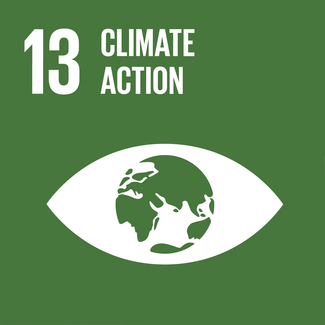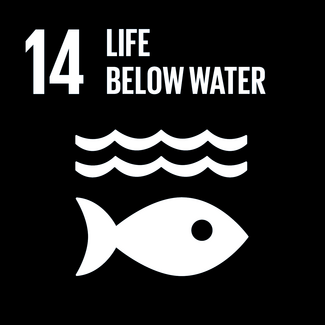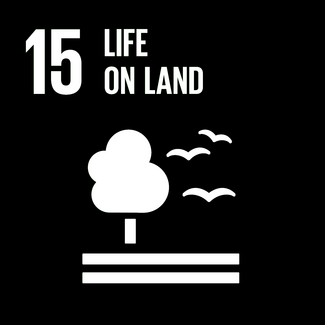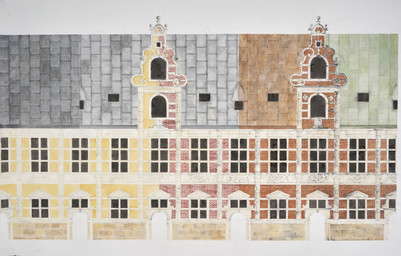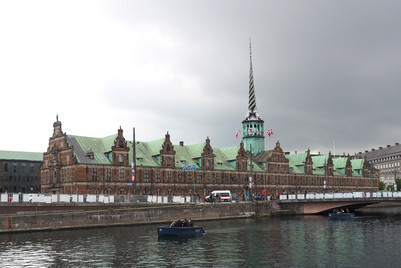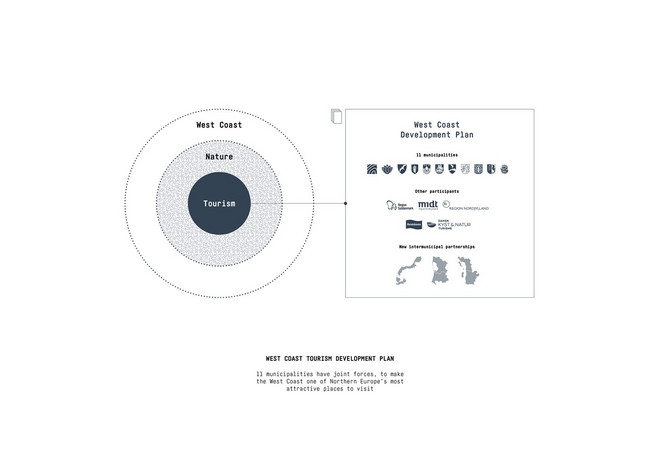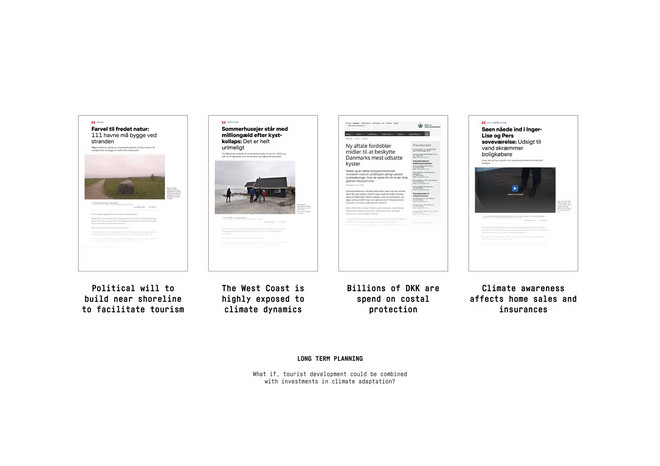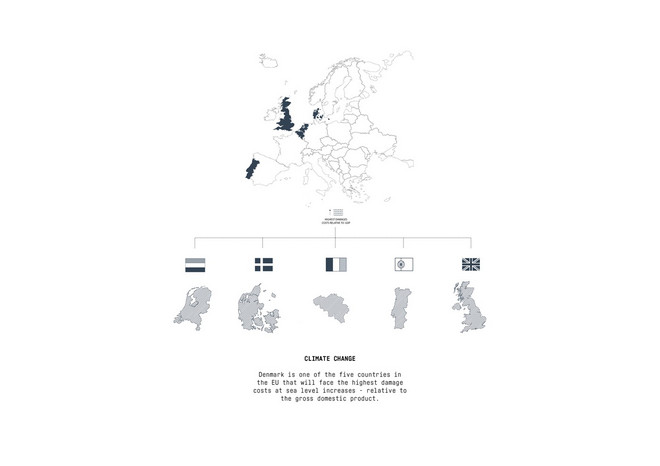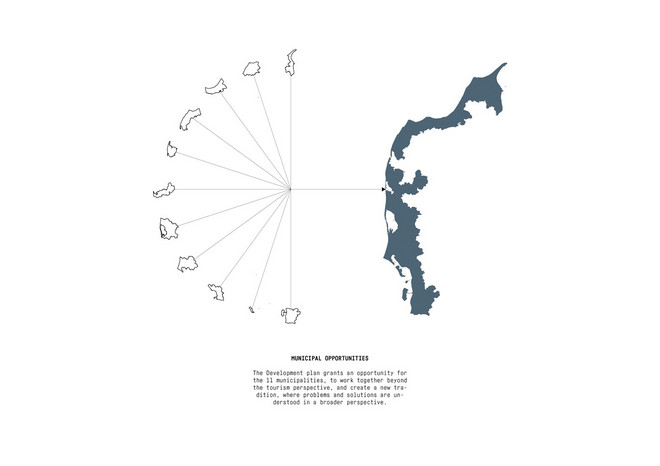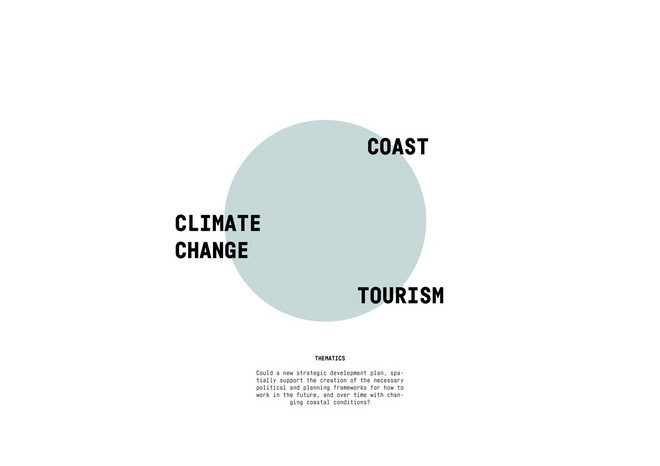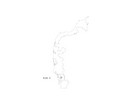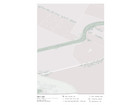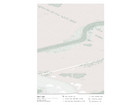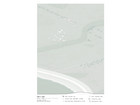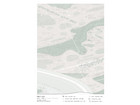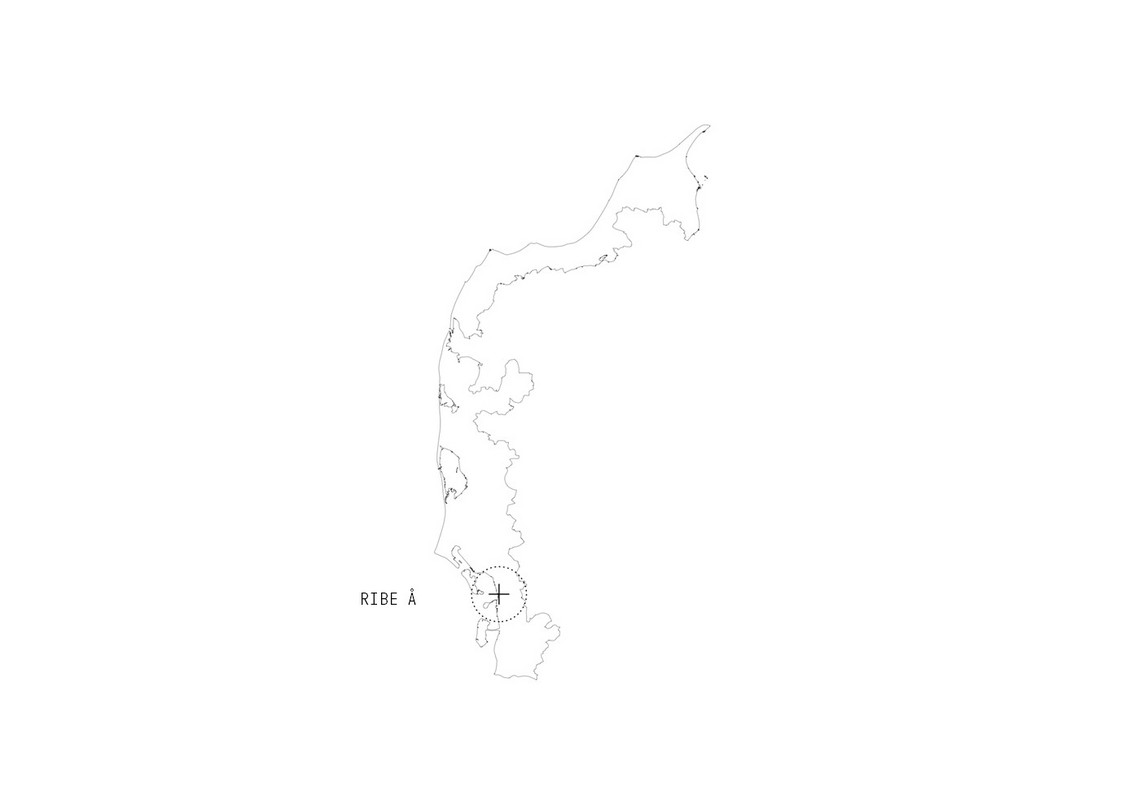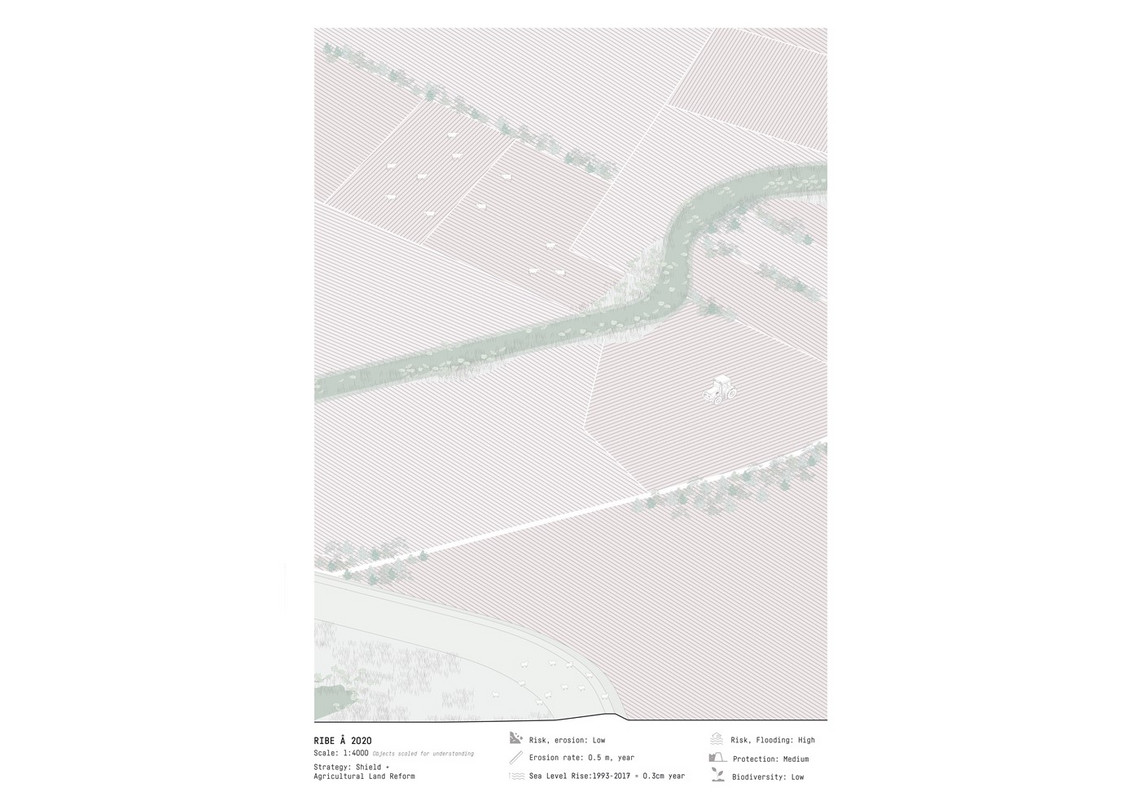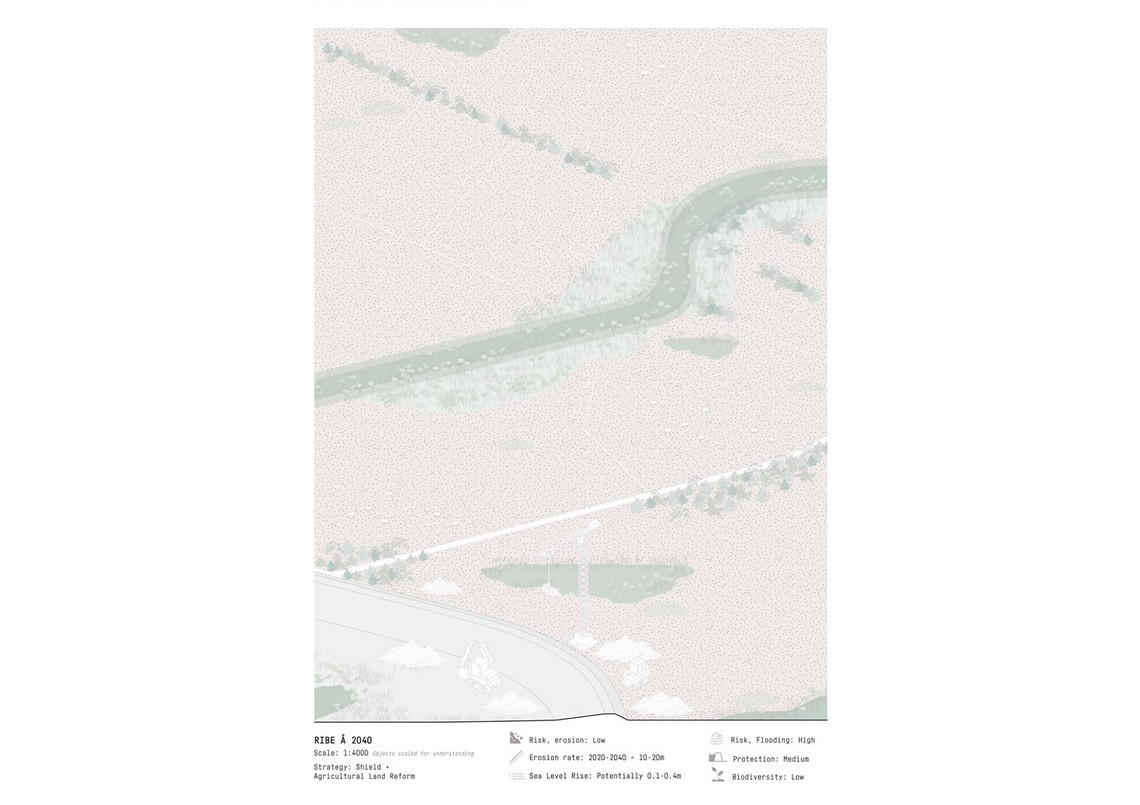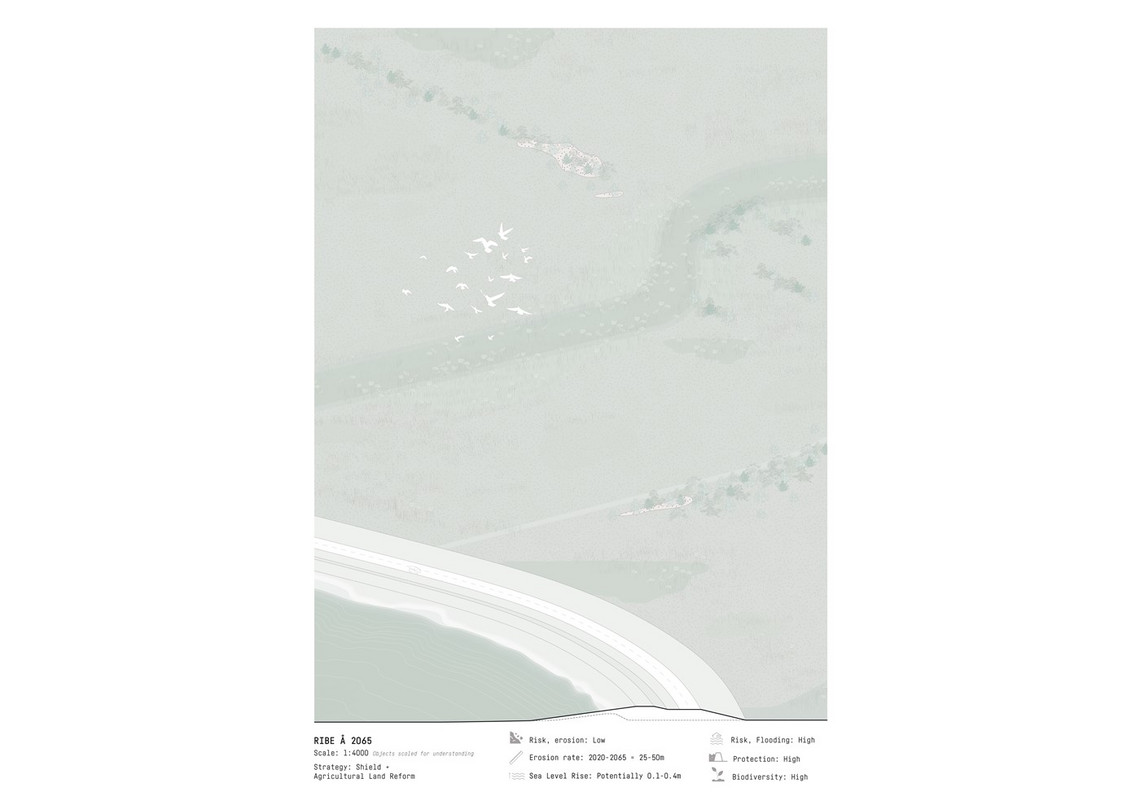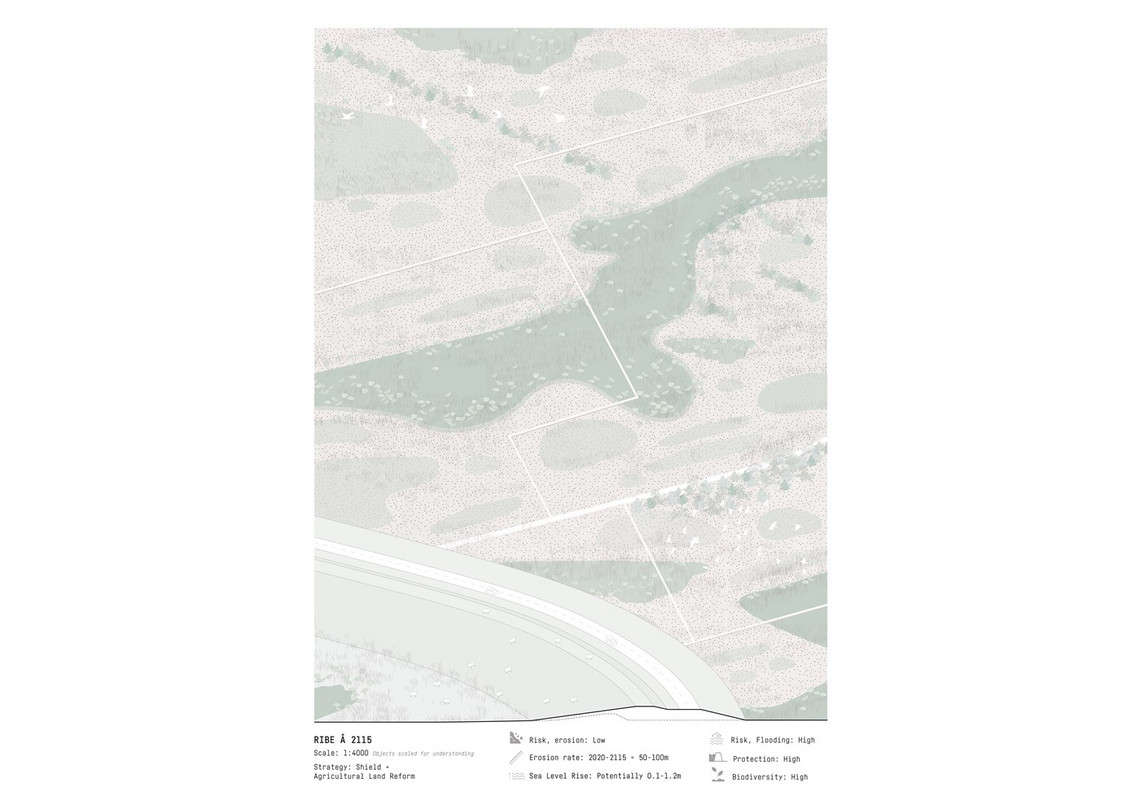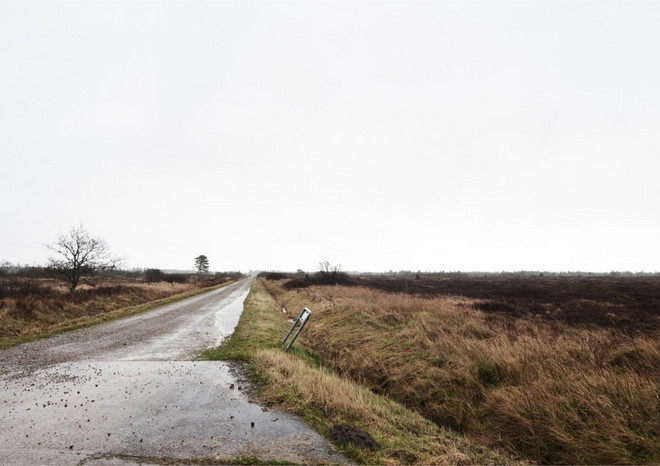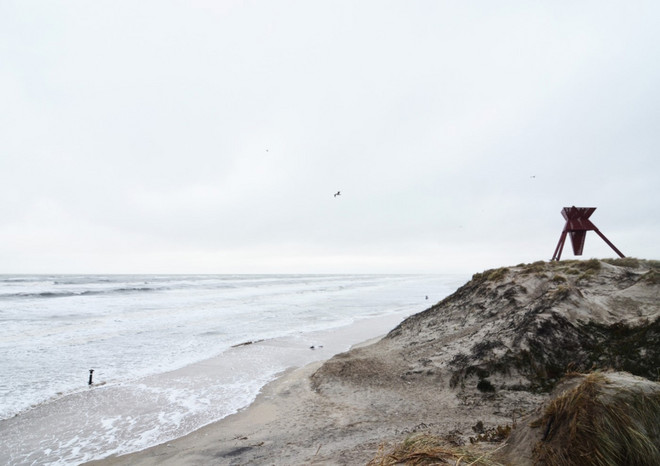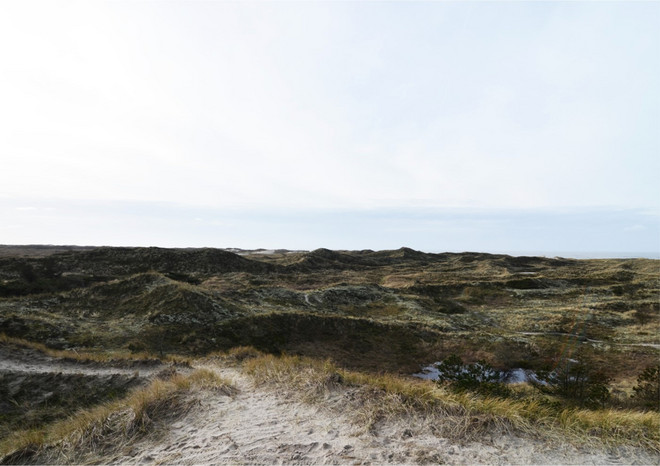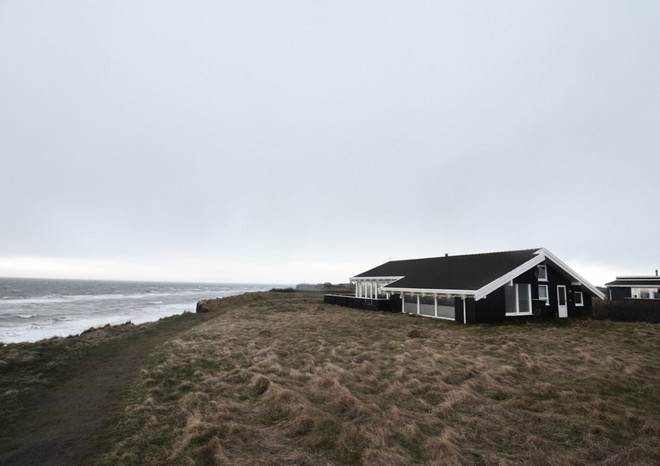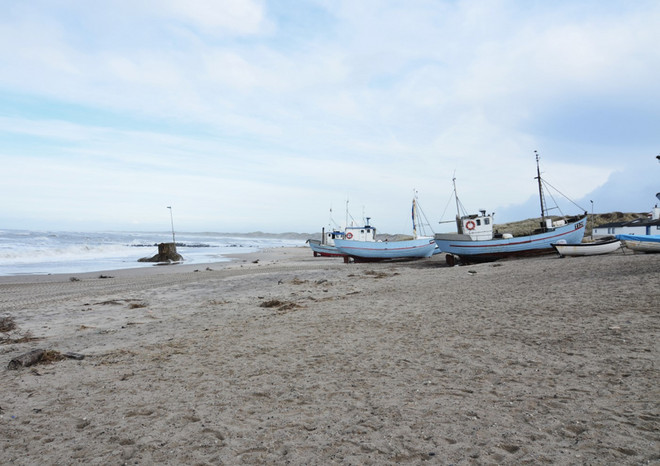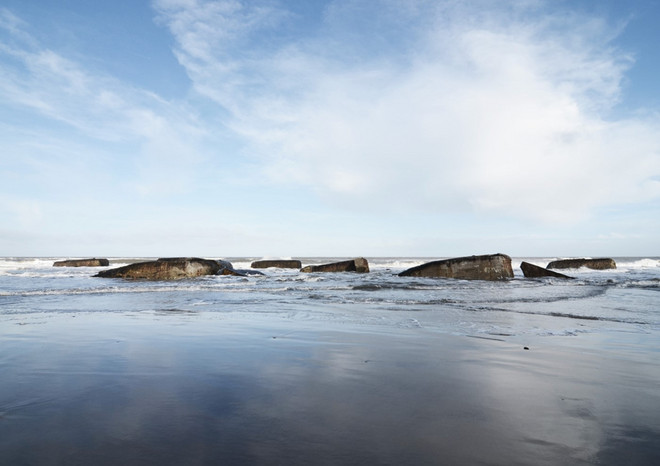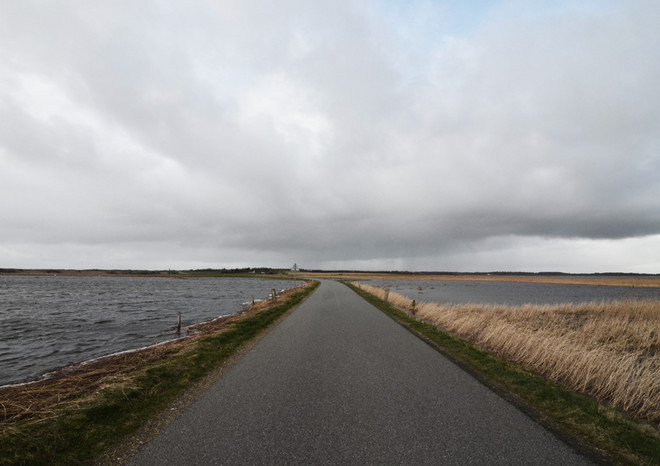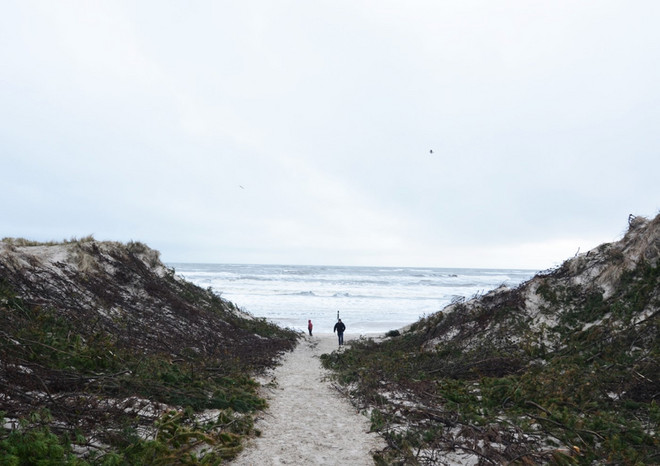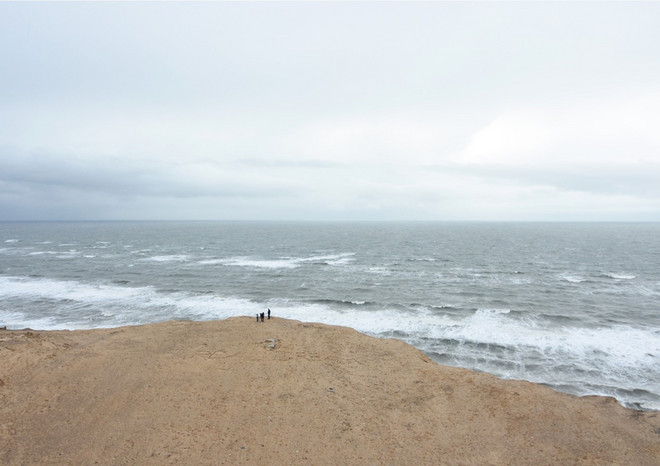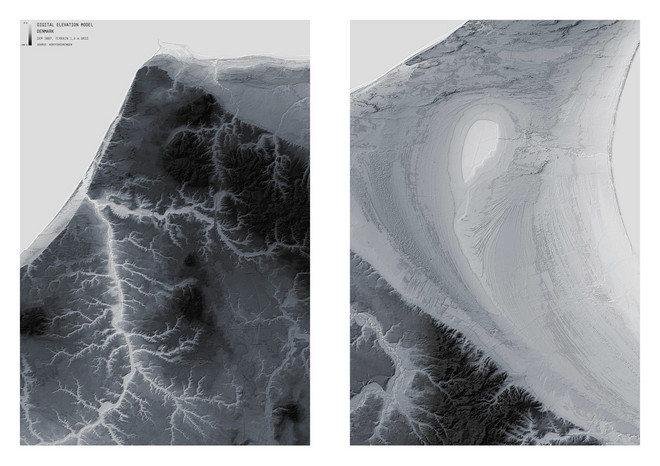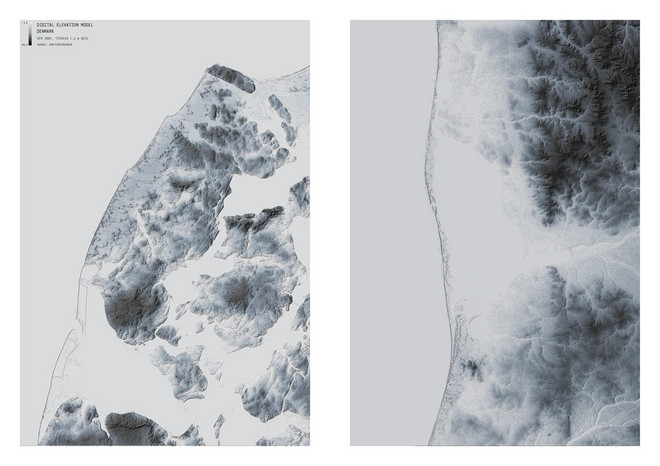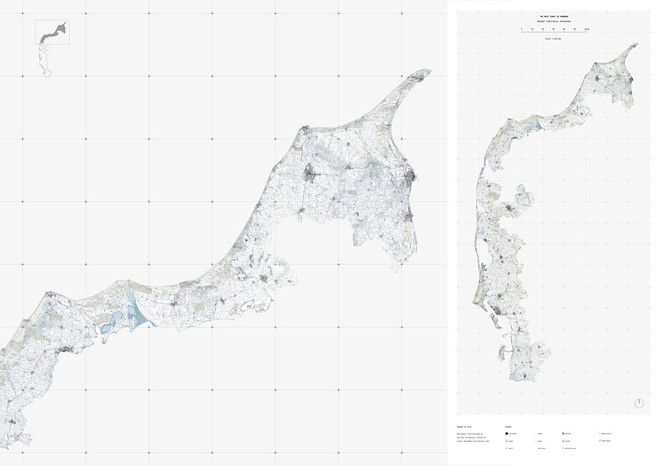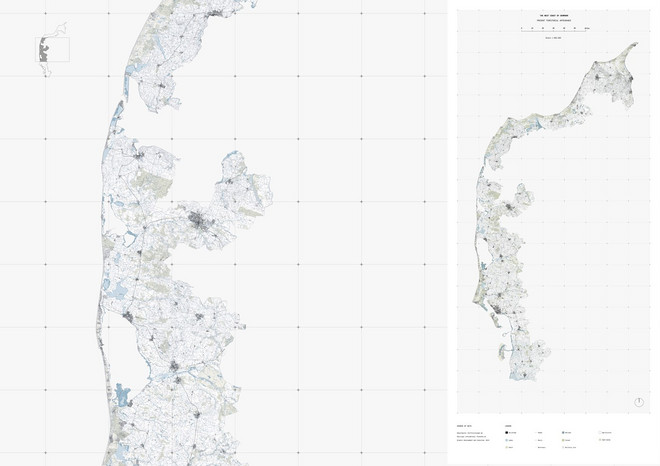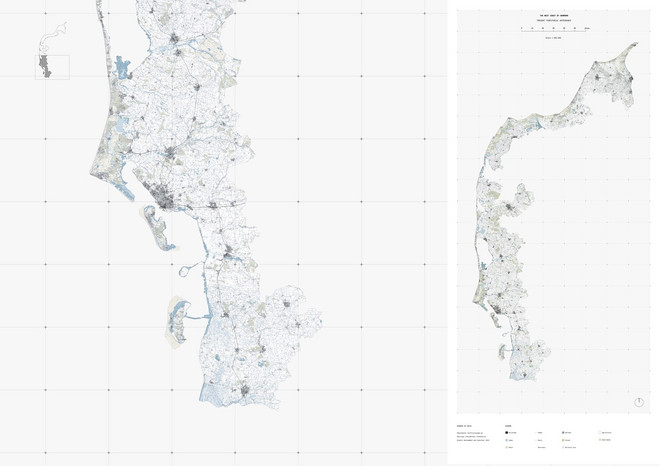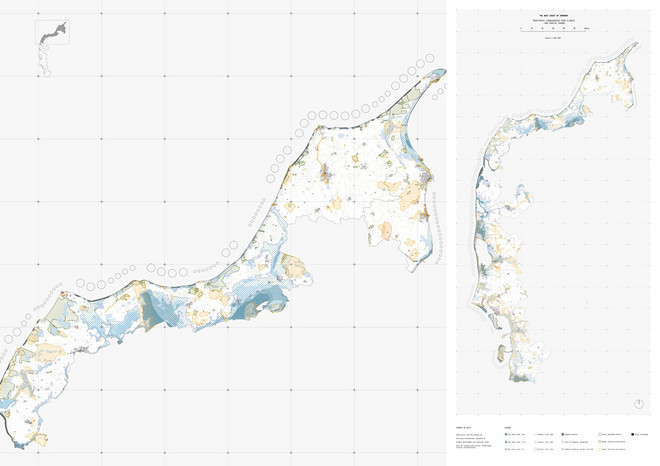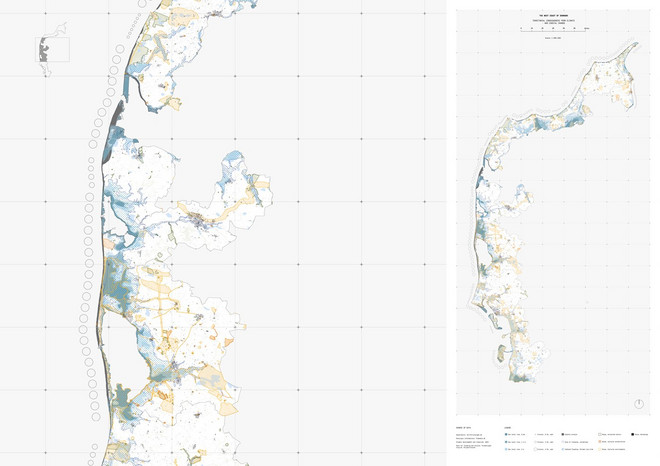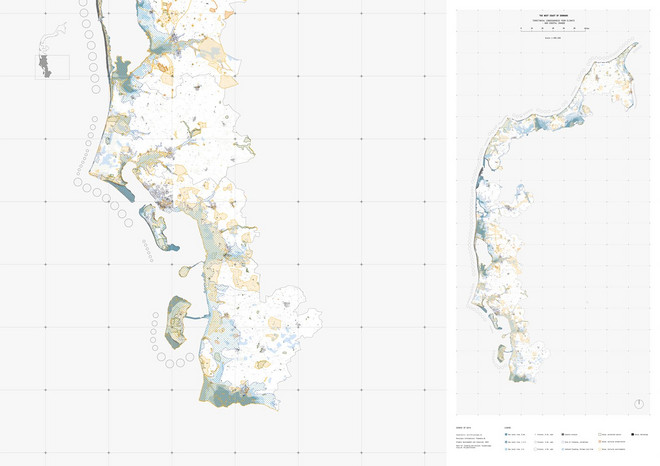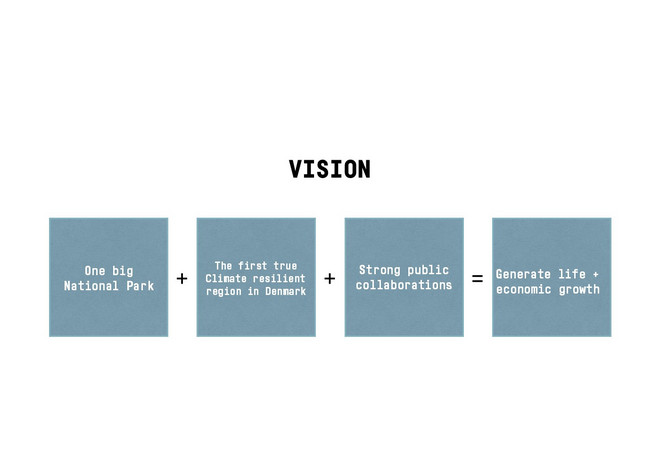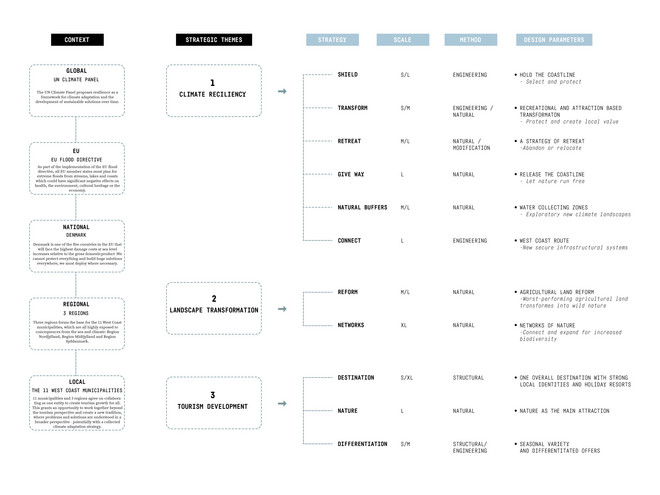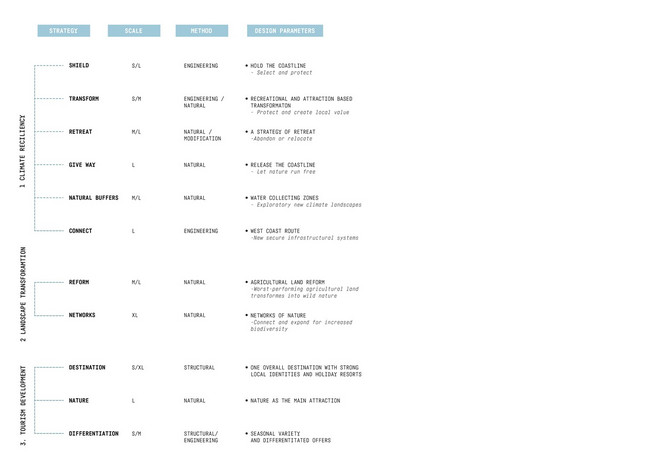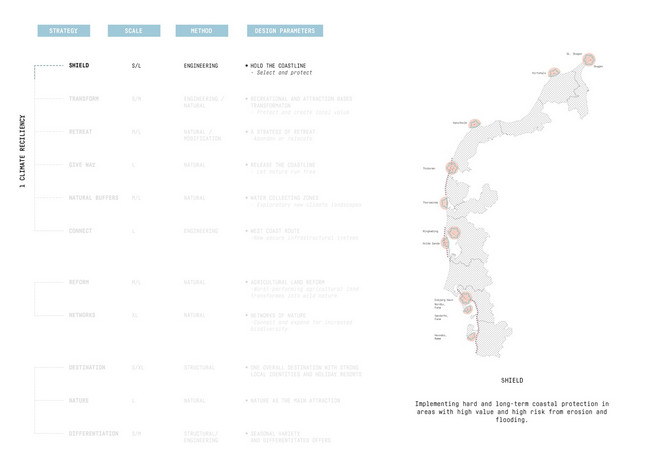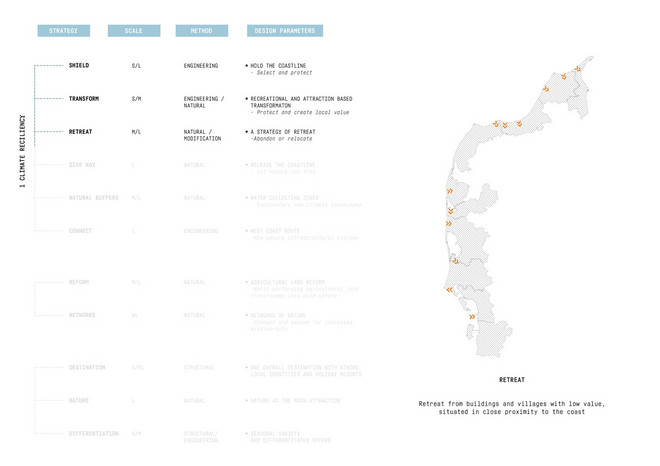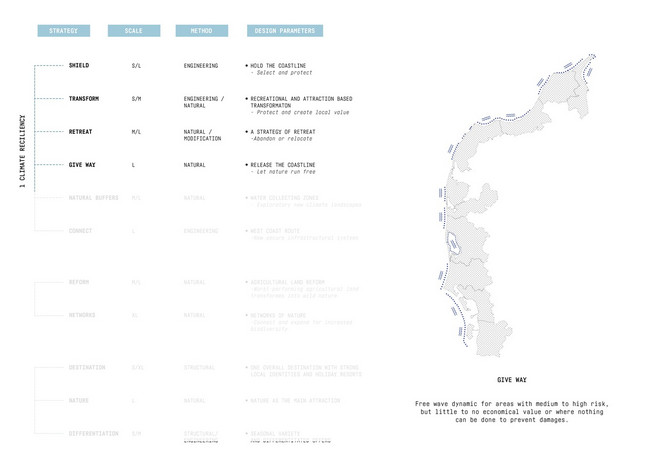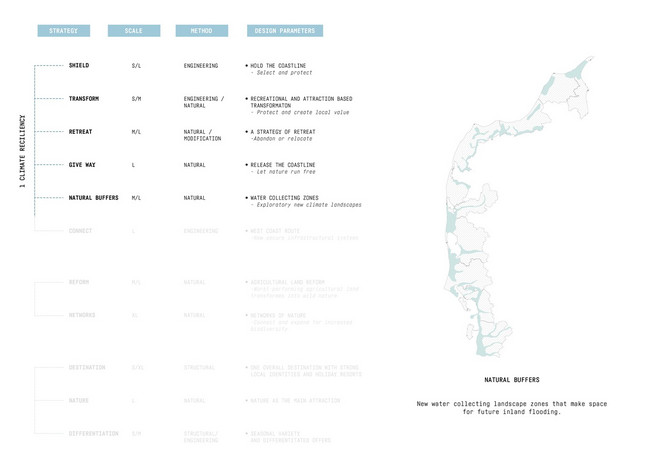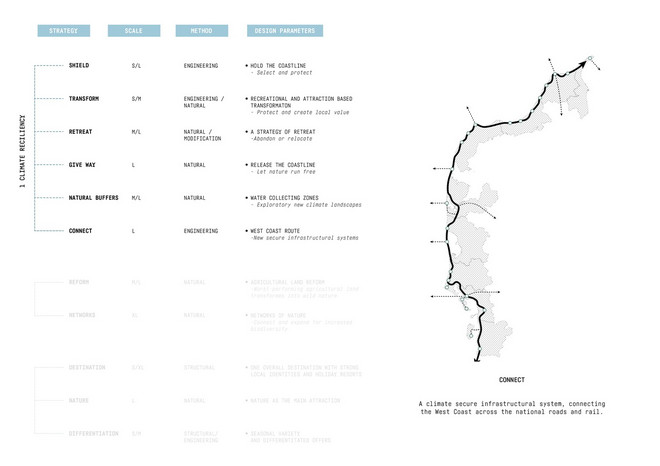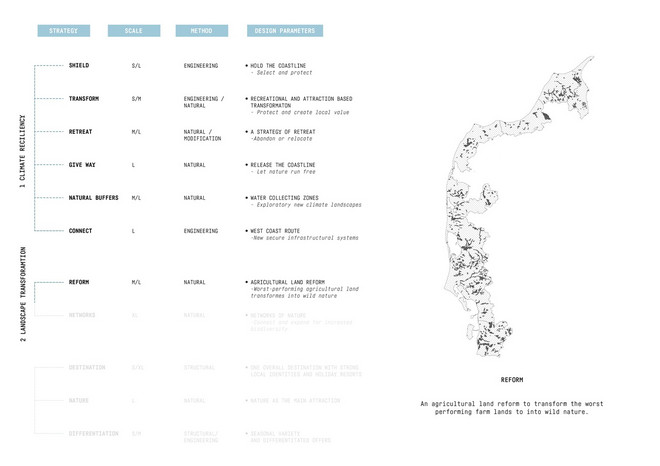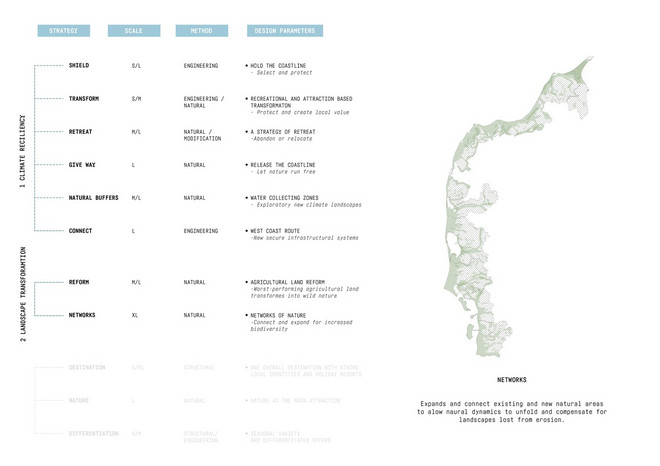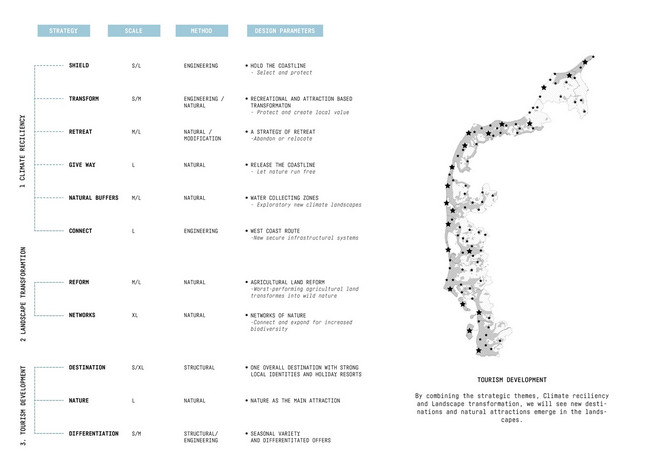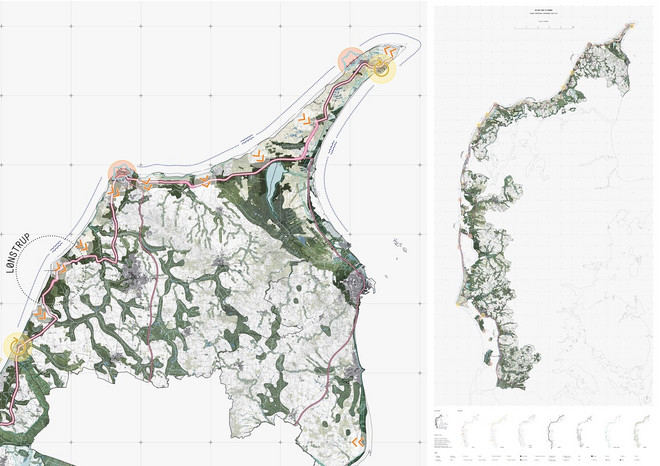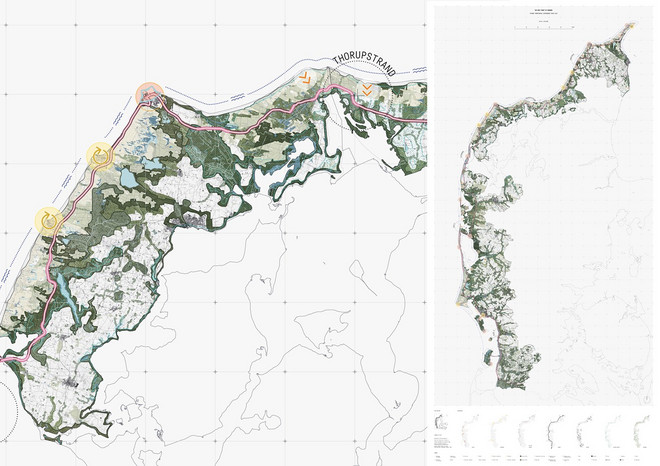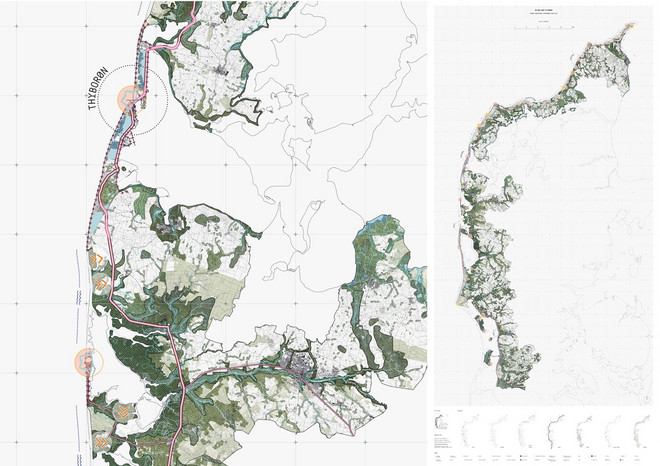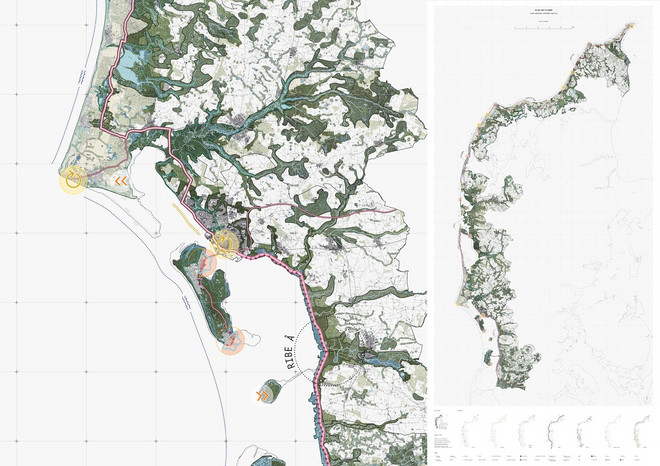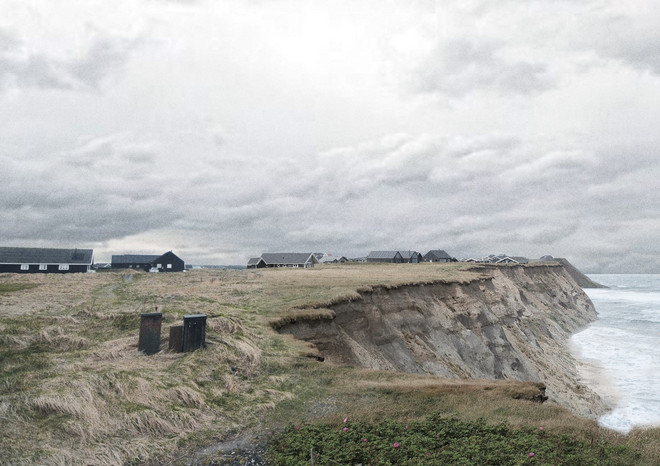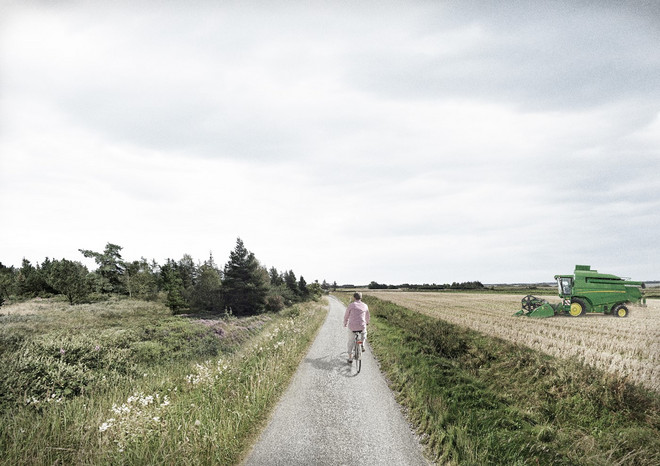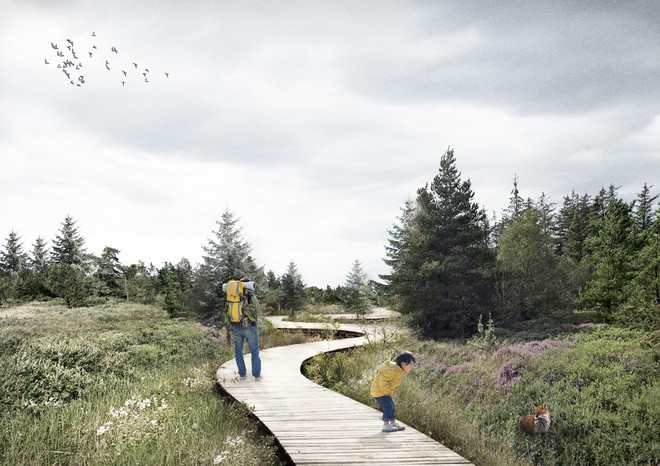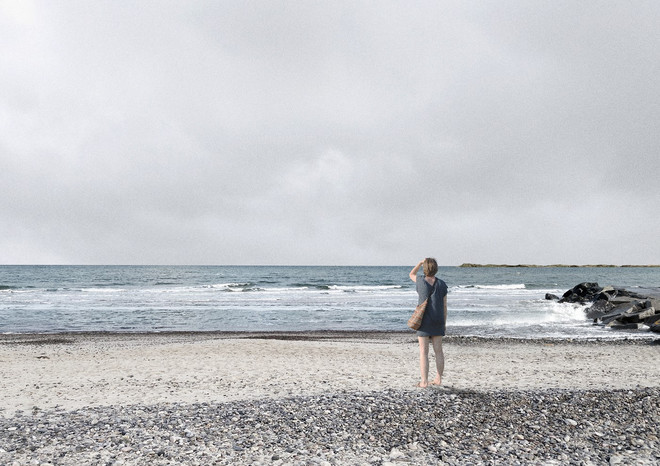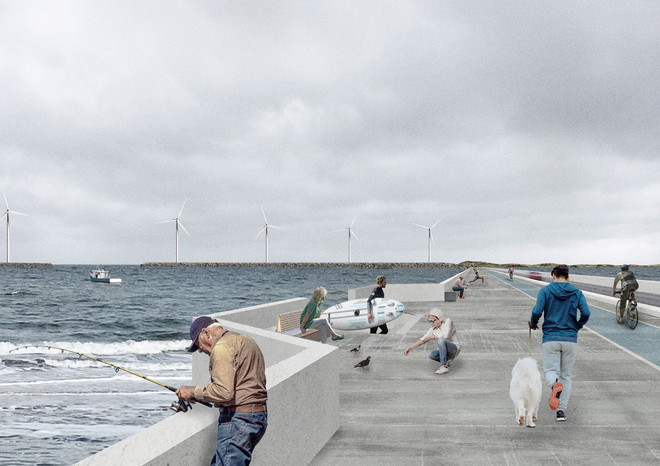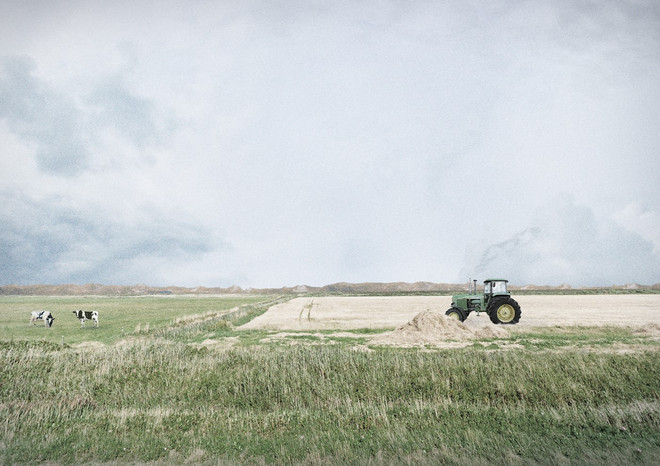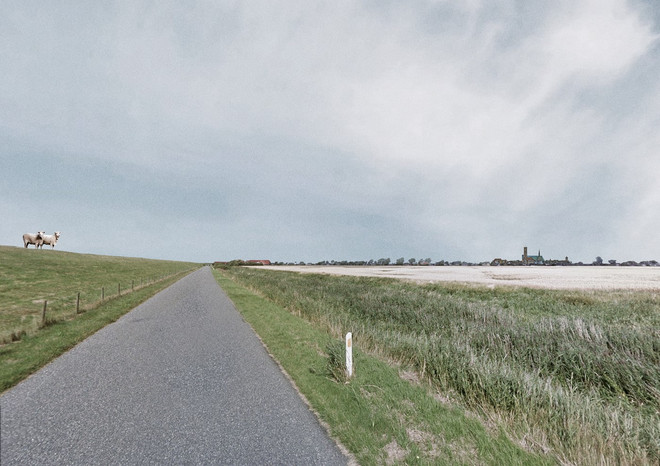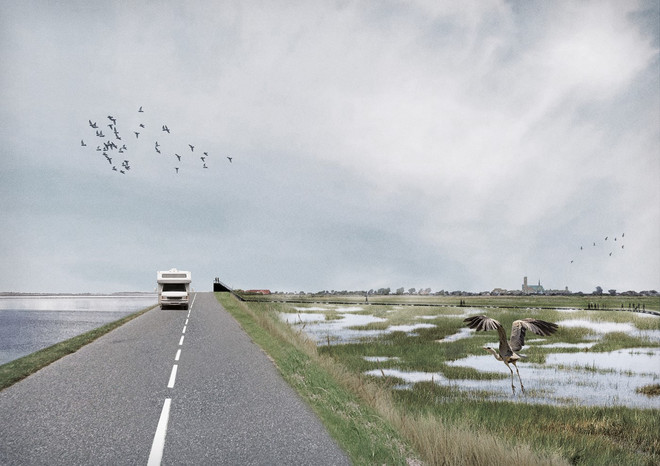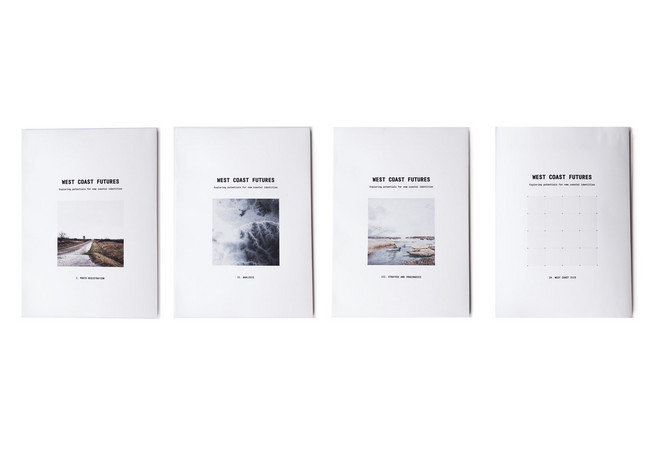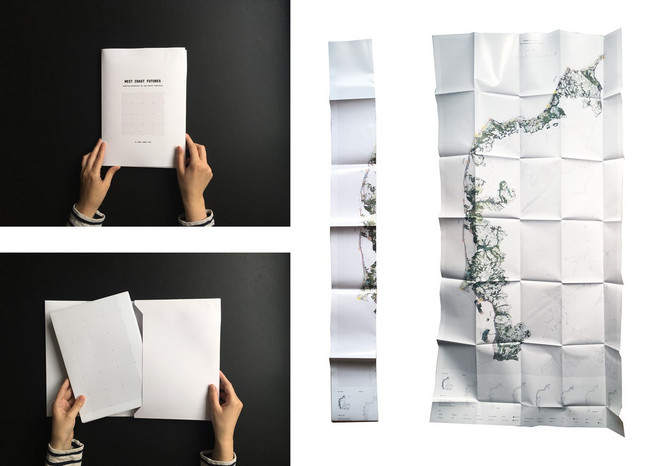
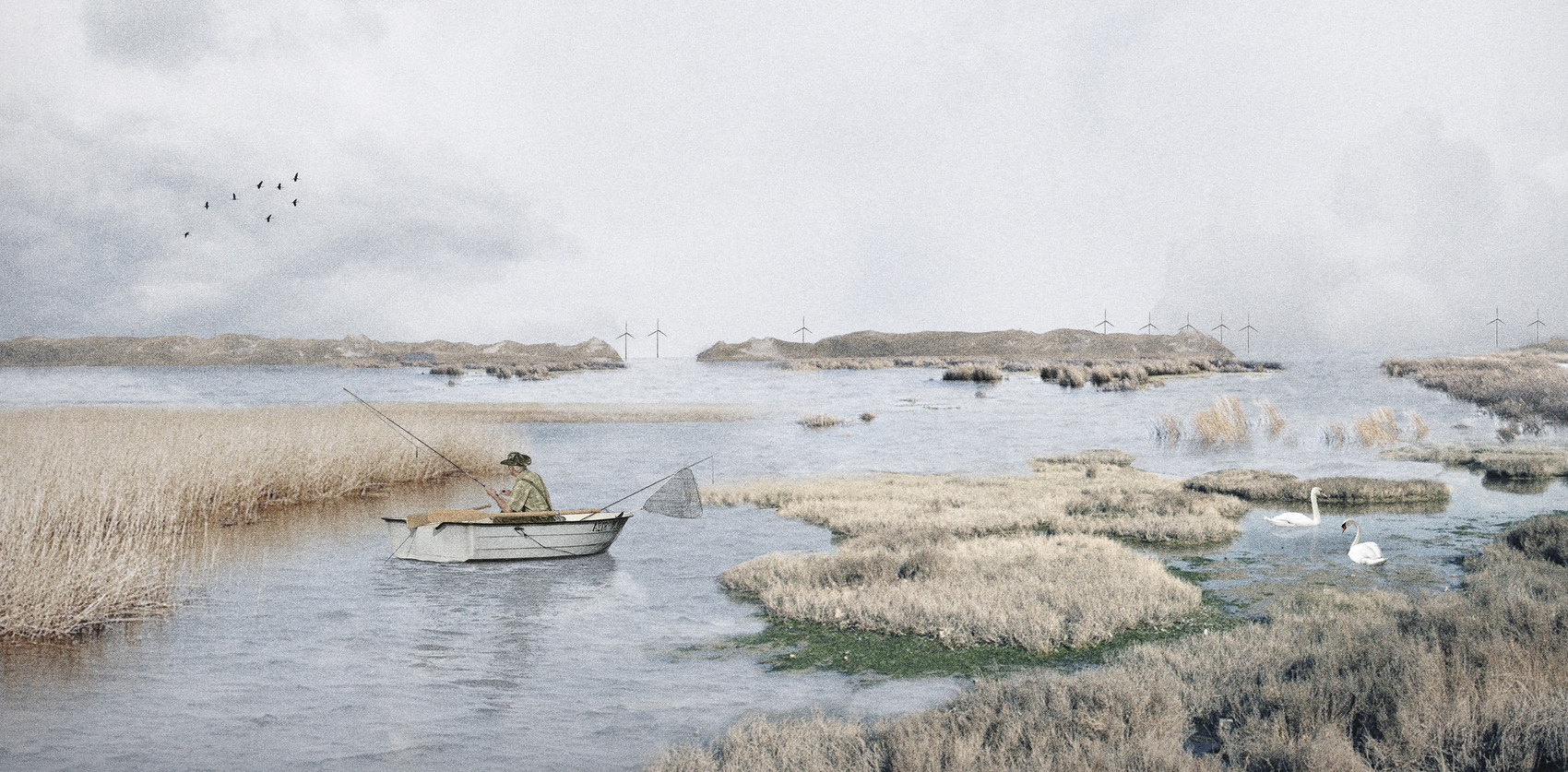
West Coast Futures
Could a new strategic development plan, spatially support the creation of the necessary political and planning frameworks, for how to work in the future, and over time with changing coastal conditions?
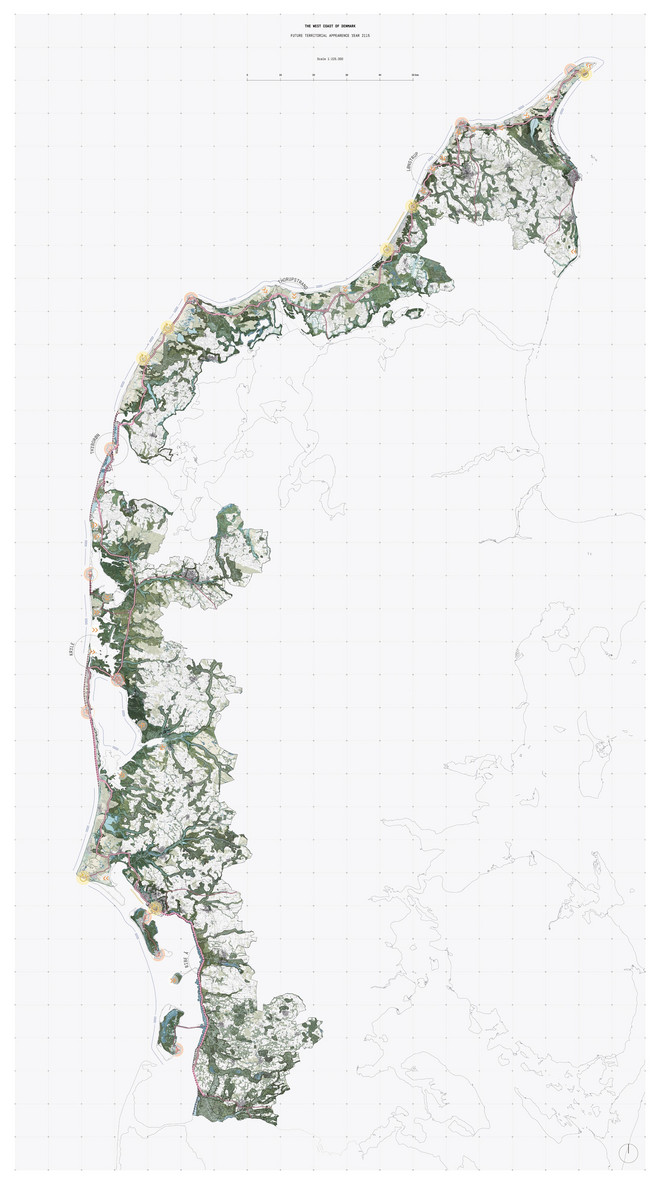
Introduction
In 2018, a tourist development plan for the West Coast of Jutland (DK) was issued. The aim is to make the area one of Northern Europe’s most attractive places to visit within 2025.
Climate change and related coastal challenges are not mentioned in the plans for the future - even though, the West Coast already has major challenges with erosion and damages in cases of extreme weather events.
With consideration of the massive investment frame the report facilitates, we ask: What if, tourism development could be combined with investments in climate adaptation? Could the development plan grant an opportunity for public collaborations beyond the tourism perspective, and create a new tradition, where problems and solutions are understood in a broader perspective? For example in a climate adaptation process.
Analysis
Historically, human intervention in coastal dynamics, especially through the 1800s and 1900s has been crucial for the development and reshaping of our coastal landscapes in Denmark. Trough time we have made groynes, breakwaters and dams. We have sand-fed our coasts, drained natural waterways and dumped materials - all to make the sea more stable. Today coastal protection is the answer to coastal related problems. But future climate change creates an increased risk and the way we protect today might not be sufficient in the future.
Future events, in combination with raising seas, will eventually increase the risk of loss and damage of material and immaterial values. When looking at predictions and previous extreme weather events, it becomes clear, that there is, and will be a growing need for cities and municipalities, to adapt for the future. If we don’t, we might very soon start to face more consequences, and it will be far more expensive not to start the adaptation processes now.
Strategy
It is our vision to form, and create, one big national park - a wild frontier, a place to visit all year around - unfolding natural dynamics and making space for connected natural networks, stretching from Skagen in the North, to Højer in the South. The West Coast becomes a frontrunner in the organization, of creating the first true climate resilient region in Denmark. With strong public collaborations, when dealing with challenges, that can be hard to handle as a single municipality. It is our goal to create a strong collected destination. To support and generate life, economic growth and new traditions for collaborations - for the long term future of the area - not just the next decade.
Spatial imaginaries
The spatial imaginaries are zoom-ins, where different strategies are explored spatially and show how territories will change according to different approaches. The location of the spatial scenarios are spread out across the region, showing 5 diverse landscapes and strategies.
Timelines of the three overall thematics - Coastal landscapes, Climate change and Tourism - have been developed as a tool to imagine and plan, how our future territories will look with the implementation of the strategic concepts.
It is hard to predict the future. The discussion about whether to protect the coast or let nature go its own way has been going on for years. Climate change and more harsh weather makes the discussion more relevant than ever.
Our project is a visionary strategic planning proposal of how to work with future changes and an attempt to show other possible ways of imagining our coastal landscapes.
Det Kongelige Akademi understøtter FN’s verdensmål
Siden 2017 har Det Kongelige Akademi arbejdet med FN’s verdensmål. Det afspejler sig i forskning, undervisning og afgangsprojekter. Dette projekt har forholdt sig til følgende FN-mål


